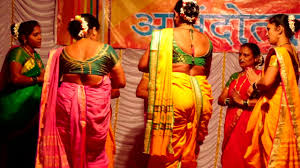The Western Ghats, “Richest biodiversity hub”-The Tribes of Karnataka
The Indian State of Karnataka, once part of several kingdoms and princely states of repute in the Deccan peninsula is rich in its historical, cultural, and anthropological heritage. There are as many as 50 different tribes notified by the Government of India, living in Karnataka, of which 14 tribes, including two primitive ones, are primarily natives of this State. Interesting to note that most of these tribes who had been original natives of the forests of the Western Ghats have been privy to an enormous amount of knowledge about various medicinal plants and their use in traditional/folklore medicine and these practices have been the subject matter of various scientific studies. Kannada is the most widely spoken and official language of the State. Apart from Kannadigas, Karnataka is the home to Tuluvas, Kodavas, and Konkanis along with minor populations of Tibetan Buddhists.
Goudalu, Hasalaru, Jenu Kuruba, Konda Kapus, Kudiya, Melakudi, Kuruba, Koraga, Kokna, Kokni, Kukna, Malaikudi, Maleyakandi, Maleru, Maratha, Marathi, Palliyan, Toda, Varli, Yerva and so on live in Chikmagalur, Mysore, Kodagu, Udupi, Dakshina Kannada, Chamarajnagar and of course are spread all around the state. The Koraga tribe is among the two most primitive and most backward tribes declared by the Government of India. This is not only one of the most notable tribes of Karnataka but also one of the primitive tribal groups. This tribe is scattered over many districts of the State, particularly in Udupi and Dakshina Kannada. They are also found in Haveri and in small numbers in Shimoga, Uttara Kannada, and Kodagu districts.
Koragas spend most of their income on alcohol, which is consumed by all ages, and also indulge in smoking beedi and chewing betel. They subsist mainly on rice and meats such as pork and beef, although they are increasingly also using products such as pulses and vegetables. Diet is poor and malnutrition is common in children. The Paliyan, or Palaiyar, or Pazhaiyar are a group of more than 10,000 Adivasi Dravidian people living in the south Western Ghats mountain rain forests in south India, especially in Tamil Nadu and Kerala. They belong to the primitive tribal group. They inhabit the southern tip of the State of Karnataka, especially in the Kodagu district. Most people of this tribe are traders of forest products, food cultivators, and beekeepers. The Paniyan tribe resides in Karnataka mainly in the southern districts of Kodagu, Dakshin Kannada, and Mysore.
The Western Ghats, the “Richest biodiversity hub”, constitute a mountain range along the western side of India and has over 5000 species of flowering plants. The forests and hills of this region are the treasure house of medicinal plants. The Western Ghats is classified into three regions, viz., South, Central, and North. The Central Western Ghat range includes the Uttara Kannada (former North Canara) and some parts of the Dakshina Kannada (former South Canara) districts. The indigenous knowledge of different communities like Gawlis, Siddis, Kunbis, and Kare-vokkaliga on specific human ailments like poisonous snake bites, skin diseases, reproductive health, herpes, bone fracture, and wounds, veterinary ailments, ethnomedicinal knowledge in the treatment of skin diseases, herpes, eczema, scabies, Ringworm, Measles, more than 15 different types of human skin infections viz. ringworm, intertrigo, boils, sores, dermatitis, skin pigmentation, septic due to skin allergies, itching due to impure blood, dandruff, eczema, herpes, leucoderma, measles, pruritus, scabies and so on
Traditional practitioners usually prefer external and internal applications or oral administration of herbal preparations in the treatment of various types of skin ailments depending on the type and severity of the infection. The drug formulations are usually a Paste of the drug parts with water, lime juice, lime water, rice-washed water, coconut water, butter, ghee, milk obtained from coconut gratings, coconut oil, jaggery, honey, cow's milk or cow's urine; extraction of oil from the drug parts; juice extract from fresh juicy parts or with water; application of exudates of raw materials like latex; decoctions and infusions of drug parts with water; roasted and powdered raw plant material; fried plant material with coconut oil, ghee, etc and ash of the burnt drug part. The external application of the drug is used for all types of skin ailments except in the treatment of itching due to impure blood. The internal use of plant medicines is for sores in the nose, buccal cavity, or ear Or administration is for boils, itching due to impure blood, eczema, herpes, measles, pruritus, scabies, septic due to skin allergies, and intestinal sore.
















Comments